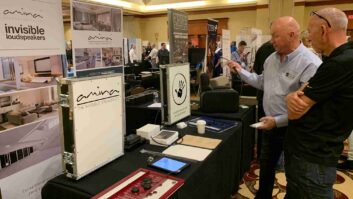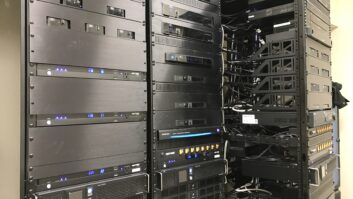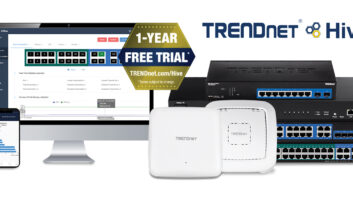In the July 2013 issue of Residential Systems, contributing editor Llanor Alleyne delved into the subject of networking infrastructure in the home and the essentials integrators should know about adding networking and IT services to their portfolios.
In a web-only exclusive, here are more details on the primary networking component categories that integrators should become familiar with, as told by Luxul’s Martin Boulter. Also, Llanor looks closer at the Multimedia over Coax Alliance (MoCA) and its hybrid network concept involving coax cabling. Then following are two integrators’ perspectives on successful networking installations they’ve performed and the products they choose.
The Purpose, Functions and Different Options Available for Major Networking Components
It’s important to understand that all networking gear is not made equal and equipment choice will impact installation complexity, network performance, and the overall customer experience. The primary component categories the integrator should become familiar with are:
• Modem: Converts the incoming signal from a service provider to IP traffic and feeds that into the router.
• Router: The primary interface between the outside world (the WAN via the modem) and the local network (LAN), providing IP services such as DHCP, DNS, and NAT, as well as security. This being the case, the router plays a major role in the overall network integrity and performance. Understanding how the use of wired versus wireless routers can impact the network is also important. The router can also offer VPN Services for remote access to avoid unnecessary truck rolls.
• Switch: Connect devices on the local network. Typically connected directly to the router. There is a wide range of switch options that should be understood in order to design the optimal network for a client. Integrators use unmanaged switches to simply expand the number of wired devices that can connect, or managed switches, which offer additional management features like VPNs, QoS, etc. Switches do not typically provide network services such as DHCP, DNS, and NAT.
• Wireless Access Point (AP): Provide wireless network access to devices on the local network. Can be connected as a device on a switch or directly to the router. Again, there are a wide range of options and environmental factors that impact performance and coverage.
—Martin Boulter, Customer Services Manager, Luxul

Rob Gelphman, MoCA, VP of marketing and member relations
MoCA and the Hybrid Network
The Multimedia over Coax Alliance (MoCA) was founded in 2004 to promote the distribution of HD video content over existing coaxial cabling. The current MoCA specification can support multiple streams of HD video and deliver up to 175 Mbps net throughputs. MoCA has more than 118 certified products and more than 54 members worldwide representing the home entertainment network segment, including service providers, OEMs, consumer electronics companies, and chip vendors. MoCA’s VP of marketing and member relations, Rob Gelphman, outlined three things that integrators need to understand when creating an IP network that includes integration over coaxial cable.
First, custom integrators must acknowledge that the home and office are hybrid IP/networking environments, he said. This blended networking environment exists because it’s either impractical or impossible for existing Cat-5/6 Ethernet cable or Wi-Fi to reach every drop point.
Gelphman noted that while some technologies focus on mobility (wireless) or ubiquity (powerline), MoCA technology is specifically created to support the high-bandwidth, low-latency characteristics of HD video streaming.
Second, Gelphman added, custom integrators need to ask the question, “How can I make my customer’s existing wireless experience even better?”
“Custom integrators should be considering how to use all in-home network plant access points–wireless, powerline, and coax. When a custom integrator uses MoCA technology to add an Ethernet-connected, Wi-Fi access point with localized Wi-Fi range extension to a patio, kitchen, or public area, it’s a win-win for both the custom integrator and the customer. The custom integrator is a hero providing robust localized wireless coverage to what was once a dead zone. This also keeps the customer’s options open for service operator and cloud provided seamless streaming of high-speed TV, music and video.”
Finally, a custom integrator should never rule out coax as a component of the customer’s IP/networking infrastructure,” Gelphman stated. In other words, “anything that is IP-based” can be part of a custom integrator’s revenue stream using the customer’s existing coaxial wiring.
“Consider that coax has been used as the best medium for delivery of video for more than 50 years and it’s in more than 90 percent of all U.S. households,” he said. “Coaxial cable has inherent benefits, including that it is a shielded wire, meaning that the signal being carried is not subject to interference from outside sources. MoCA technology uses a part of the coax cable’s bandwidth that’s not occupied by CATV or satellite video bands. That way, coaxial cabling becomes the pipeline for HD and other IP data that would normally require a separate ETH run.”
—Llanor Alleyne
INTEGRATOR VOICES
Dennis Jaques, Owner
Maverick Integration, Bedford, NH
In a world full of $50 over-the-counter network appliances, how have you successfully sold your client a more robust solution?
Networking is about more than just switches and routers. Knowing we are installing the best networking products available gives us more confidence in the jobs we are doing. Before we discovered there was a solution out there that provided a complete network, not just products, we never could guarantee our clients reliable Wi-Fi. We were at the mercy of a range of any number of different vendors. Being able to turn to a single, network solution provider like Access Networks completely eliminated that. We now know our networks are going to work each and every time, and we can feel confident that our clients’ homes will function as they should.
What are your go-to products/components for a successful network solution? Why these products/components?
We trust Access Networks to design and support our networks. They have a certified staff of IT and AV professionals, and use a combination of enterprise-grade gear by Cisco Systems and Ruckus Wireless. We give Access Networks an overview of the system, it shows up in a box, we plug it into the system, and they support it with a three-year services warranty. It really is that easy.
For our company to be able to provide our customers with the same level of capability in a network offered by Access Networks, we would have to add a minimum of three employees: a high-level tech, a system designer and someone to program and manage the network once deployed. Finding three qualified employees to handle those functions would most likely require around $300,000 in salary per year—and that’s assuming you could find the talent. Most people who would have the qualifications would already have a career in a corporate environment. In our business, the most profitable thing we sell is our time. Having a plug-and-play solution that can provide us with a reliable, robust network that automatically provides us with three additional employees that we can sell without any additional work on our end is a tremendous asset to our bottom line.
Greg Simmons, Vice President
Eagle Sentry, Las Vegas, NV

In a world full of $50 over-the counter network appliances, how have you successfully sold your client a more robust solution?
Eagle Sentry provides turnkey, fully integrated solutions for our customers. We actually tell the clients that in order for the system to function properly, the network equipment must be of a higher caliber than the over-the-counter products they may have been used to in the past. We now consider ourselves to be an IT company that happens to design and install security and automated home electronic systems. The network strength and reliability is key to any successful installation these days. We recently had a high-rise condo client complain about the poor wireless connectivity in their unit. At the time, they were remodeling and hired Eagle Sentry to install a substantial home entertainment system that used iPads as primary control devices. We explained that a custom designed Luxul wireless network would give them the complete coverage that would allow us to guarantee reliable and consistent coverage day and night. While they did question pricing on certain items in the proposal, they did not hesitate when it came to the network portion.
What are your go-to products/components for a successful network solution? Why these products/components?
We always like to start with a Luxul Xen XBR-2300 Router. Depending on the size and floor plan of the home we will add the appropriate Luxul Xen wireless access points to ensure complete coverage. We need products that we can trust to ensure system functionality and prevent expensive service calls. Luxul has given us that confidence we need to design and install reliable integrated systems.







